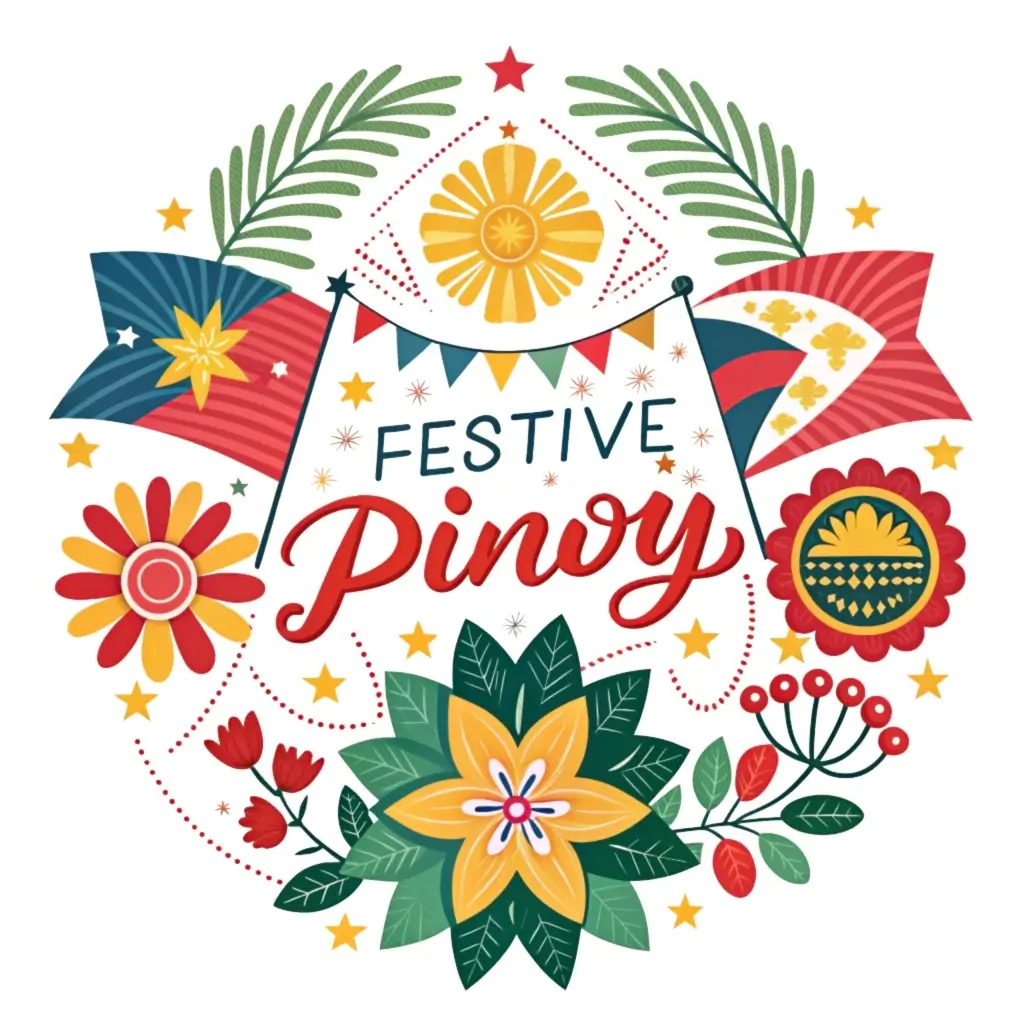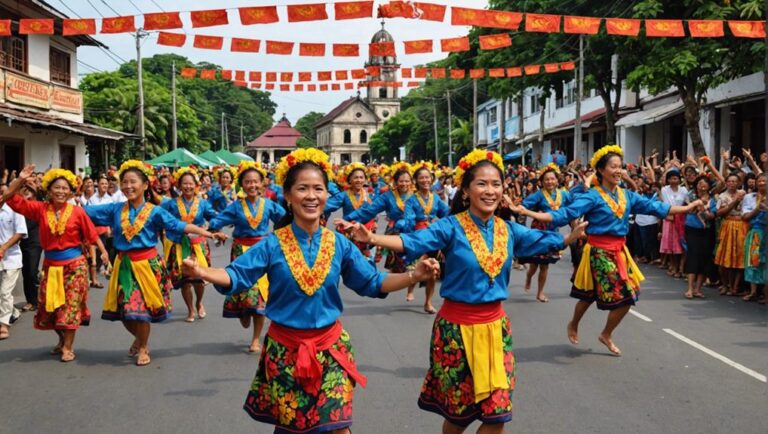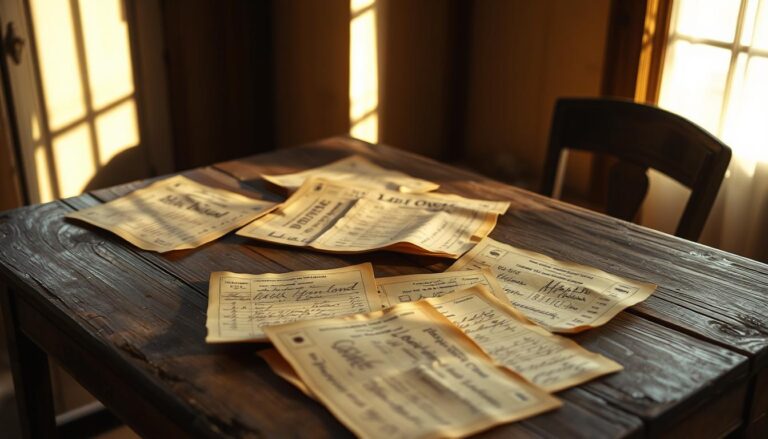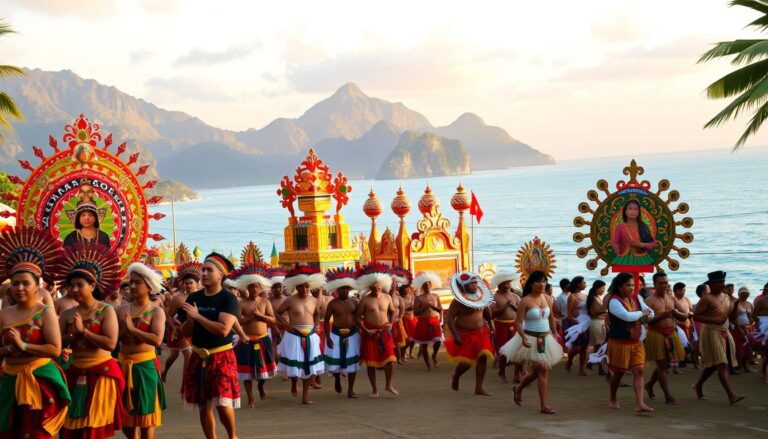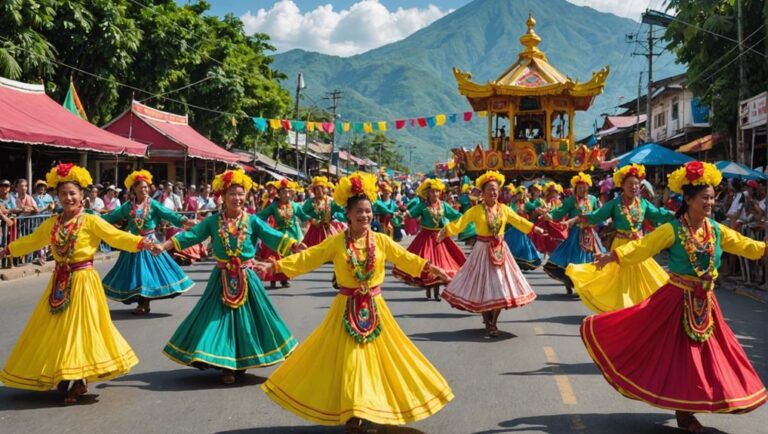Sinadya Festival: Traditions & Celebrations

Every December, Roxas City comes alive with vibrant colors, music, and devotion. The annual event honors Our Lady of Immaculate Conception, blending faith, culture, and holiday cheer into a week-long celebration. Locals and visitors gather for parades, concerts, and fireworks, creating an unforgettable experience.
The festivities peak on December 8, the feast day, with a grand fluvial parade and dazzling displays. Some years merge the event with Halaran, forming Sinadya sa Halaran, a fusion of traditions. Post-pandemic, 2022 marked the return of full-scale activities, reigniting community spirit.
Beyond religious significance, the occasion also highlights local heritage. Street dances, trade fairs, and beauty pageants showcase the region’s pride. The Immaculate Conception Metropolitan Cathedral serves as the heart of the celebrations, drawing crowds for special masses.
Key Takeaways
- Honors Our Lady of Immaculate Conception every December 8.
- Combines religious, cultural, and Christmas themes in one event.
- Features parades, fireworks, and a fluvial procession.
- Includes traditional dances and community performances.
- Roxas City Charter Day (May 12) is a separate but related celebration.
What Is the Capiz Sinadya Festival?
The Hiligaynon word for “joy” inspired a beloved annual tradition. Founded in 1988 by Gerardo Roxas Jr. and Judy Araneta-Roxas, the event boosts tourism while celebrating local identity. Its name reflects the heartfelt spirit of the community.
For five days each December, the celebration blends religious reverence with cultural pride. Pre-pandemic, crowds reached thousands, drawn by the unique mix of Spanish Catholic and indigenous traditions. The event honors Our Lady of Immaculate Conception while showcasing Panay Island’s rich history.
Key features include:
- A fluvial parade symbolizing faith and unity
- Vibrant street dances rooted in local heritage
- Trade fairs highlighting Roxas City’s seafood bounty
The festival’s dual purpose—devotion and cultural showcase—creates an unforgettable experience. Its colonial-era influences blend seamlessly with modern festivities, making it a cornerstone of Philippine cultural calendars.
The Rich History of the Sinadya Festival
1988 saw a political family reimagine local heritage into a grand celebration. The Roxas family, led by Gerardo Roxas Jr. and Judy Araneta-Roxas, sought to revive cultural pride post-Marcos era. Their vision blended centuries-old traditions with modern tourism appeal.
Origins and Founding
The festival’s roots trace back to 1693, when Augustinian missionaries established Marian devotion in the area. By 1877, the iconic stone cathedral—now the Immaculate Conception Metropolitan Cathedral—was completed. This became the spiritual heart of the celebrations.
Judy Araneta-Roxas championed cultural preservation, weaving indigenous practices into the event. Her efforts ensured the nine-day novena and fluvial procession honored both faith and local identity.
The Role of Gerardo Roxas Jr. and Judy Araneta-Roxas
Gerardo Roxas Jr. leveraged political influence to boost tourism, while Judy’s passion for heritage shaped the festival’s authenticity. Their collaboration created a blueprint for community-driven events across the Philippines.
Key milestones:
- 17th-century Marian devotion laid the spiritual groundwork
- 1877 cathedral construction solidified religious centrality
- 1988 merger of tradition and tourism under the Roxas family
Religious Significance of the Sinadya Festival
The religious roots of this celebration run deep, intertwining faith and culture. At its heart is the veneration of Our Lady of Immaculate Conception, a cornerstone of Catholic doctrine. This belief, emphasizing Mary’s purity, has shaped the spiritual identity of the region for centuries.
Honoring Our Lady of Immaculate Conception
The Immaculate Conception doctrine holds profound theological importance. It celebrates Mary’s conception without original sin, a belief central to Catholic teachings. This event honors her as the patroness of the Archdiocese, drawing devotees from across the Philippines.
Novena prayers begin on November 29, leading up to the feast day on December 8. These nine days of devotion reflect the community’s deep faith and commitment. “The Immaculate Conception is not just a belief; it’s a way of life here,” shared a local parishioner.
The Role of Roxas Cathedral
The Immaculate Conception Metropolitan Cathedral stands as a symbol of faith and history. Established as the Metropolitan See in 1976, it serves as the spiritual hub of the region. Its architecture and significance trace back to the 1707 Augustinian missions, which laid the foundation for Catholic devotion in the area.
Today, the cathedral hosts key events like the Pontifical Mass and fluvial procession. Its leadership plays a vital role in organizing the celebrations, ensuring they remain true to their religious roots.
| Event | Significance |
|---|---|
| Novena Prayers | Nine days of devotion leading to the feast day |
| Fluvial Procession | Symbolizes faith and unity on the water |
| Pontifical Mass | Celebrated by the Archbishop, honoring Mary |
Compared to other Marian festivals in the Philippines, this event uniquely blends colonial-era traditions with modern practices. It remains a testament to the enduring power of faith and community.
Sinadya sa Halaran: A Fusion of Celebrations
The fusion of two iconic events brings a shared spirit of unity and heritage. Known as Sinadya sa Halaran, this combined celebration blends the joy of one tradition with the historical depth of another. It’s a testament to the region’s ability to honor its past while embracing the present.
The Meaning Behind “Sinadya sa Halaran”
The name itself holds deep significance. Sinadya sa Halaran translates to “Joy of Sharing,” reflecting the event’s core values. It’s a celebration that emphasizes community, gratitude, and the act of giving. This linguistic breakdown captures the essence of the combined festivities.
How the Two Festivals Merged
The merger began in 1992, when city and provincial governments joined forces to streamline logistics and resources. This collaboration not only reduced costs but also strengthened the bond between the two events. The halaran festival, established in 1975, commemorated the historical landing of Bornean datus in Panay. Its reenactments and cultural displays added depth to the already vibrant sinadya halaran.
From 1998 to 2019, the combined celebration became a staple of the region’s cultural calendar. The 2019 event marked the last pre-pandemic gathering, showcasing the unity and resilience of the community. Beyond its cultural significance, the merger also boosted local businesses, attracting tourists and fostering economic growth.
Key Religious Activities During the Sinadya Festival
The heart of the event lies in its religious ceremonies and processions. These activities blend faith, tradition, and community spirit, creating a deeply spiritual experience. From daily masses to grand processions, each event holds unique significance.
Novena Prayers and Daily Masses
The celebration begins with a 9-day novena, starting on November 29. Each day, devotees gather for 6:00 AM masses, offering prayers to Our Lady of Immaculate Conception. This period of devotion sets the tone for the upcoming feast day.
Daily masses are held at the Immaculate Conception Metropolitan Cathedral. These services provide a moment of reflection and gratitude, uniting the community in faith. The novena culminates on December 8, the feast day, with a grand celebration.
Prosesyon sa Suba: The Fluvial Procession
One of the most iconic events is the fluvial procession, held on December 7. Decorated barges carry the image of Our Lady of Immaculate Conception along the Panay River. Candle floaters illuminate the water, creating a mesmerizing display of faith.
The engineering of these barges is a testament to local craftsmanship. Each barge is carefully designed to ensure stability and beauty. This procession symbolizes unity and devotion, drawing thousands of participants and spectators.
Pahimansag kay Maria: The Pontifical Mass
The Pontifical Mass, celebrated by the Archbishop, is the pinnacle of the religious activities. This solemn ceremony honors Our Lady of Immaculate Conception, reaffirming the community’s faith. The Mass includes traditional hymns and prayers, creating a deeply spiritual atmosphere.
Historically, this Mass has evolved to incorporate local traditions while maintaining its religious roots. It serves as a reminder of the enduring power of faith and the importance of community in spiritual life.
| Event | Significance |
|---|---|
| Novena Prayers | Nine days of devotion leading to the feast day |
| Fluvial Procession | Symbolizes faith and unity on the water |
| Pontifical Mass | Celebrated by the Archbishop, honoring Mary |
Secular Celebrations and Events
The celebrations extend beyond religious traditions, offering a mix of cultural and modern activities. These events highlight the region’s vibrant identity and bring the community together in joyous unity.
Street Dances and Parades
One of the most captivating features is the street dance competition. Performers showcase intricate choreography, blending traditional and contemporary styles. The colorful costumes and rhythmic movements reflect the region’s rich heritage.
Parades fill the streets with energy, featuring floats adorned with local themes. These processions are a visual treat, drawing both locals and tourists to the heart of the action.
Food Festivals and Culinary Highlights
Known as the seafood capital, the region takes pride in its culinary offerings. Food festivals are a highlight, featuring fresh catches and local delicacies. Visitors can savor dishes like grilled oysters, shrimp sinigang, and seafood paella.
Trade fairs also showcase the area’s agricultural bounty, from tropical fruits to handmade snacks. These events provide a taste of the region’s flavors and support local producers.
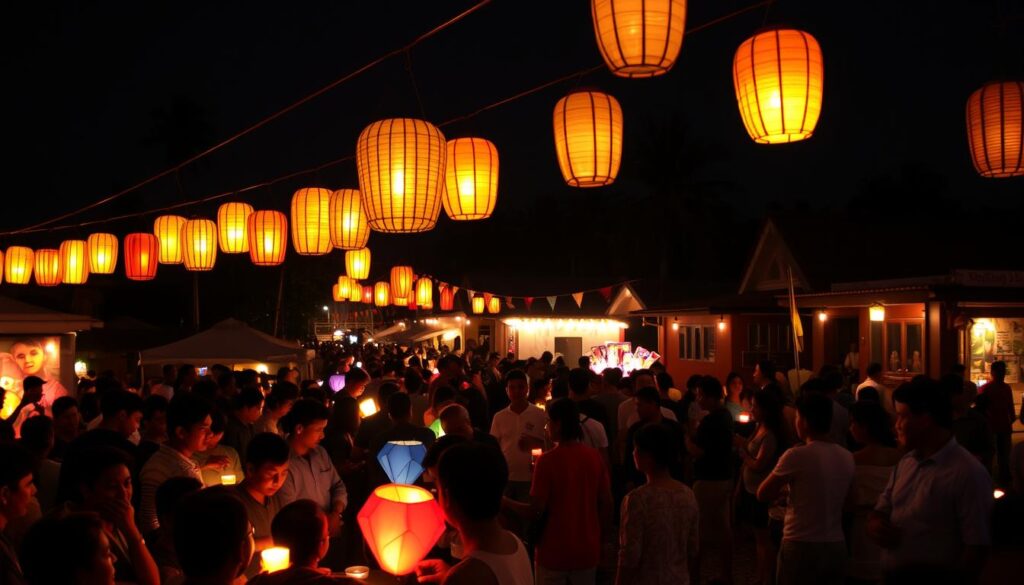
Kasanag: The Lighting of Christmas Decorations
On December 7, the City Plaza transforms into a dazzling spectacle with the Kasanag lighting ceremony. Thousands of lights illuminate the area, marking the start of the holiday season. The technical precision behind the installations ensures a breathtaking display.
This event is a family favorite, with live performances and festive music adding to the ambiance. It’s a perfect way to kick off the holiday spirit.
Other highlights include e-sports tournaments with exciting prizes and a grand fireworks display. Safety protocols ensure that everyone can enjoy these events without worry. Together, these activities make the celebration a truly unforgettable experience.
The Halaran Festival: A Celebration of Sharing
The Halaran Festival brings to life the ancient traditions of Panay Island. This vibrant event commemorates the 13th-century barter between Malay settlers and the indigenous Ati people. It’s a celebration of unity, heritage, and the spirit of sharing.
Historical Roots of Halaran
The festival traces its origins to the arrival of Bornean datus in Panay. According to legend, they traded land with the Ati people, marking the beginning of a shared cultural legacy. This historical event is reenacted during the festival, using replica artifacts and traditional costumes.
Ethnographic details of the Ati people are highlighted, showcasing their unique customs and way of life. These reenactments not only educate but also preserve the island’s rich history for future generations.
How Halaran Complements Sinadya
The Halaran Festival and Sinadya sa Halaran share a deep connection. Both events celebrate the region’s cultural diversity and historical significance. While Halaran focuses on the barter story, Sinadya emphasizes religious devotion and community unity.
Tourist demographics during the combined festivals show a mix of local and international visitors. The provincial government allocates significant cultural budgets to ensure these events remain vibrant and inclusive.
Merchandising of Halaran-themed crafts, such as handwoven textiles and traditional jewelry, supports local artisans. These items serve as souvenirs, allowing visitors to take a piece of the festival home with them.
How the Pandemic Affected the Sinadya Festival
The global pandemic brought unprecedented challenges to cultural events worldwide. Like many others, this celebration had to adapt to ensure safety while keeping the spirit alive. The years 2020 and 2021 saw a shift to virtual platforms, while 2022 marked a triumphant return to in-person festivities.
Virtual Celebrations in 2020 and 2021
In 2020, organizers reimagined the event for a digital audience. Virtual tours, cooking demos, and livestreamed performances became the new norm. YouTube livestreams garnered thousands of views, with some events reaching over 500,000 virtual attendees. This shift allowed the community to stay connected despite physical distancing.
2021 continued the trend, with hybrid strategies blending online and limited in-person activities. The focus was on resilience and creativity, ensuring the celebration remained a highlight of the year.

The Return of In-Person Festivities
2022 marked the full return of the event, with strict safety protocols in place. Participants were required to wear PPE, and vaccination checkpoints were set up across the venue. These measures ensured a safe environment for everyone involved.
The economic losses during the pandemic years were significant, but the 2022 revival brought renewed hope. Organizers also explored hybrid event strategies for future planning, combining the best of both virtual and in-person experiences.
As one attendee shared, “It felt like coming home after a long journey. The joy was palpable, and the community spirit stronger than ever.”
Must-See Highlights of the Sinadya Festival
The Panay River becomes a stage for one of the most iconic processions in the region. The Prosesyon sa Suba, or fluvial parade, attracts over 50,000 spectators each year. Decorated barges carrying the image of Our Lady of Immaculate Conception glide along the river, illuminated by candle floaters and Kiri-Kiti sparklers. This breathtaking display is a must-see for first-time visitors and repeat attendees alike.
For photography enthusiasts, the best spots are along the Panay River banks. Early arrival ensures a prime location to capture the vibrant colors and reflections on the water. Don’t miss the beauty pageant finals, held on December 7, where contestants showcase grace and talent in a dazzling competition.
Food lovers will enjoy the bustling seafood market, open extended hours during the event. Fresh catches like oysters, shrimp, and crabs are available, along with local delicacies. For repeat visitors, hidden gem events like traditional craft workshops and live acoustic performances offer a deeper connection to the culture.
Accessibility is a priority, with accommodations for disabled guests, including ramps and designated viewing areas. The organizers ensure everyone can fully participate in the festivities.
| Event | Date & Time |
|---|---|
| Fluvial Procession | December 7, 5:00 PM |
| Beauty Pageant Finals | December 7, 7:00 PM |
| Seafood Market | December 6-8, 8:00 AM – 8:00 PM |
Whether you’re a first-time visitor or a returning guest, these highlights ensure an unforgettable experience. Plan your trip to make the most of this vibrant celebration.
Travel Tips for Attending the Sinadya Festival
Planning your trip to Roxas City for the annual celebration? Here’s everything you need to know. From transportation to accommodations, these tips will help you make the most of your visit.
Getting to Roxas City
Roxas City Airport is your gateway to the festivities, handling over 10 daily flights. PAL Express offers convenient schedules from Manila, making it easy to plan your trip. Once you arrive, tricycles are a popular and affordable way to get around, with fares ranging from PHP 50 to 100.
For those traveling by sea, Starlite Ferries provides direct routes to Roxas City. This option is perfect for visitors who prefer a scenic journey. Local transportation apps are also available to help you navigate the city with ease.
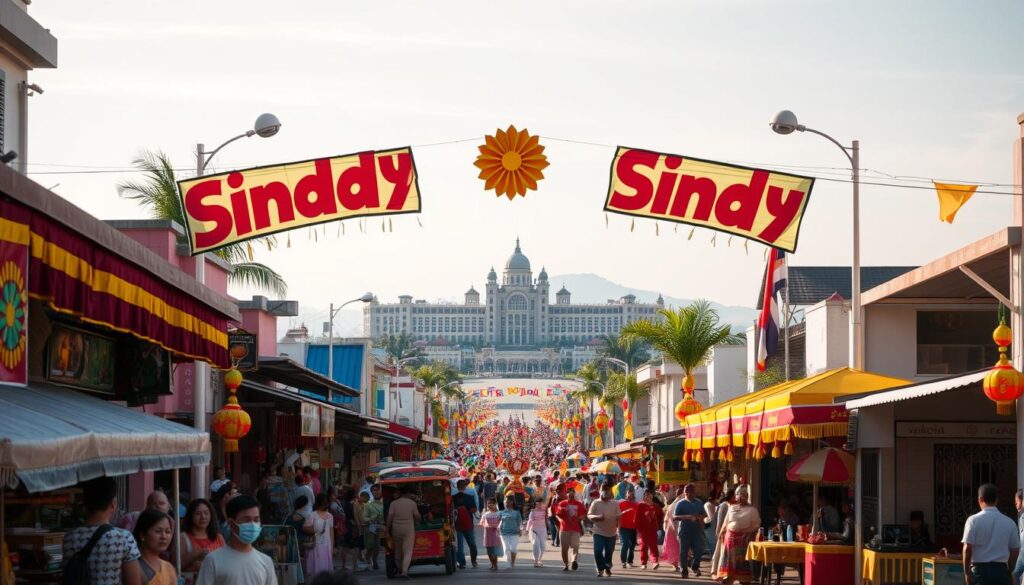
Best Places to Stay
Accommodations in Roxas City range from budget-friendly to luxurious. Urban Manor and Villa Carmen are highly recommended for their excellent service and convenient locations. Book early, especially during peak periods, to secure your preferred stay.
Most hotels offer amenities tailored to tourists, including guided tours and shuttle services. Whether you’re staying for a few days or the entire event, you’ll find options to suit your needs.
Pro Tip: Check vaccination requirements before traveling to ensure a hassle-free experience. Many establishments and events may require proof of vaccination.
The Role of the City and Provincial Governments
The city and provincial governments play a pivotal role in ensuring the success of the annual celebration. Their collaboration spans various aspects, from security to infrastructure, making the event seamless and enjoyable for all attendees.
One of the key responsibilities is security coordination with the Philippine National Police (PNP). This ensures the safety of thousands of visitors and participants. Waste management strategies are also implemented to maintain cleanliness throughout the event.
Vendor licensing procedures are streamlined to support local businesses while ensuring quality and safety. Infrastructure upgrades, such as improved festival grounds, enhance the overall experience. These efforts are backed by a ₱15 million budget allocation in 2022.
Joint marketing campaigns with the Department of Tourism (DOT) promote the event both locally and internationally. This boosts tourism and highlights the region’s cultural heritage. The City Tourism Office, reachable at (036) 620-0544, serves as the primary contact for inquiries and support.
| Aspect | Details |
|---|---|
| Budget Allocation (2022) | ₱15 million |
| Contact Information | (036) 620-0544 |
These efforts ensure the event remains a highlight of the region’s cultural calendar, celebrating unity and heritage. The collaboration between local governments sets a benchmark for other events in the Philippines.
Cultural Impact of the Sinadya Festival
The cultural influence of this annual event extends far beyond its vibrant celebrations. It has inspired artists, scholars, and the youth, shaping the region’s identity in profound ways. From literature to academic research, its impact is undeniable.
Local artists like Joe Datuin have drawn inspiration from the event’s rich traditions. Their works often reflect the themes of unity and heritage, showcasing the region’s cultural depth. This artistic expression has contributed to a 35% increase in cultural grants since 2010, supporting further creative endeavors.

Hiligaynon literature has also flourished, with many writers incorporating the event’s themes into their works. Academic research has focused on its historical and social significance, adding to the body of knowledge about the region’s heritage.
Youth participation has seen a significant rise, with many young people actively involved in the celebrations. This engagement fosters a sense of pride and continuity, ensuring the traditions are passed down to future generations.
“This event is more than a celebration; it’s a living testament to our cultural identity,” shared a local scholar.
Cultural exchange programs have further amplified its impact, bringing together communities from different regions. These programs promote understanding and appreciation of diverse traditions.
Intellectual property protections have also been strengthened, safeguarding the unique elements of the event. This ensures that its cultural significance is preserved for years to come.
| Aspect | Impact |
|---|---|
| Artistic Inspiration | Inspired works by artists like Joe Datuin |
| Academic Research | Increased focus on historical and social themes |
| Youth Participation | Rising engagement among young people |
In just a few days, this event brings together the past, present, and future, leaving a lasting legacy on the region’s cultural landscape.
Future of the Sinadya Festival
The future of this cherished event is set to embrace innovation and sustainability. With an expected attendance of over 200,000 in 2023, organizers are introducing groundbreaking changes to enhance the experience while prioritizing environmental responsibility.
One of the most exciting developments is the planned solar-powered installations. These eco-friendly solutions will power key areas of the celebration, reducing the event’s carbon footprint. This initiative aligns with broader sustainability certification targets, ensuring the event remains a leader in eco-conscious practices.
Digital payment systems are also being rolled out to streamline transactions for vendors and attendees. This move not only improves convenience but also supports local businesses by encouraging cashless transactions. Additionally, climate contingency plans are in place to address unexpected weather changes, ensuring the event runs smoothly regardless of conditions.
International partnership goals aim to bring global recognition to the celebration. Collaborations with cultural organizations and tourism boards will highlight the event’s unique traditions on a larger stage. Augmented reality experiences are another exciting addition, offering immersive ways for attendees to engage with the event’s history and culture.
These forward-thinking initiatives ensure the event remains a vibrant and sustainable celebration for years to come. By blending tradition with modern advancements, it continues to honor its roots while embracing the future.
How to Experience the Sinadya Festival Like a Local
Immerse yourself in the heart of the celebration by experiencing it like a local. Start your days early with the 5:00 AM dawn masses, a cherished tradition among the community. This spiritual practice sets the tone for the festivities and offers a glimpse into the deep-rooted faith of the locals.
For an authentic taste of the region, don’t miss the street food stalls. Binakol, a flavorful chicken soup cooked in coconut water, is a must-try. Pair it with fresh seafood, a staple of the area’s culinary scene.
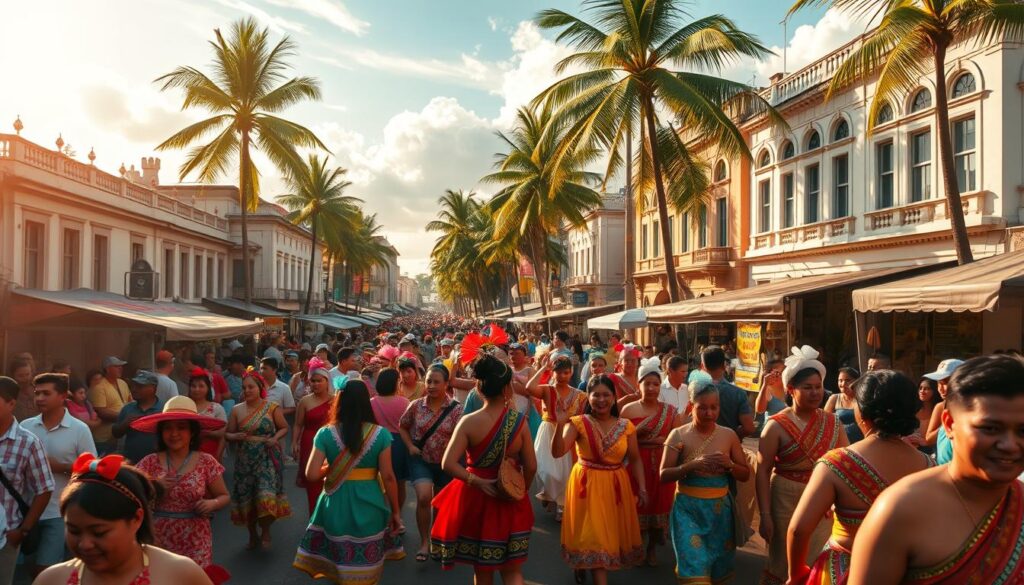
When it comes to accommodations, consider staying at family-run homestays. These offer a warm, personal touch and a chance to connect with residents. Popular options include Casa Esperanza and Villa Aurora, both known for their hospitality.
Navigating the event can be overwhelming, but insider routes can help you avoid the crowds. Locals recommend taking side streets during peak hours and arriving early for key events. This ensures a smoother and more enjoyable experience.
Proper etiquette is essential, especially during religious activities. Dress modestly, maintain silence during prayers, and follow the lead of the locals. Learning a few dialect phrases, like “Maayong adlaw” (Good day), can also go a long way in building connections.
For a truly immersive experience, join a community kitchen. These gatherings allow you to cook and share meals with locals, fostering a sense of belonging. It’s a unique way to contribute to the celebration while learning about traditional recipes.
| Tip | Details |
|---|---|
| Dawn Mass | 5:00 AM at the Immaculate Conception Metropolitan Cathedral |
| Street Food | Try binakol and fresh seafood |
| Homestays | Casa Esperanza, Villa Aurora |
| Insider Routes | Use side streets during peak hours |
| Dialect Phrases | “Maayong adlaw” (Good day) |
By following these tips, you’ll not only enjoy the event but also gain a deeper appreciation for the culture and traditions that make it so special.
Why the Sinadya Festival Is a Must-Visit
A UNESCO Intangible Heritage nomination highlights the global significance of this vibrant gathering. The event’s unique river-based traditions, such as the fluvial procession, set it apart from other celebrations in the Philippines. This blend of faith, culture, and history creates a multi-sensory experience that captivates visitors.
Compared to Sinulog and Ati-Atihan, this event offers a distinct focus on river rituals and community unity. The Prusisyon sa Suba, where devotees release candles and floaters, symbolizes prayers and intercession by the Blessed Mother. This tradition, rooted in local heritage, adds a unique layer to the festivities.
Post-event tourism extensions further enhance its appeal. Visitors often explore local museums, art galleries, and the region’s renowned seafood markets. These activities provide a deeper connection to the area’s culture and economy.
Academic recognition has also grown, with scholars studying its historical and social impact.
“This event is a living testament to our cultural identity,”
shared a local researcher. Such studies highlight its importance beyond the celebrations themselves.
Photographers praise the event for its stunning visuals. The vibrant costumes, intricate lanterns, and river-based rituals offer endless opportunities for capturing unforgettable moments. Repeat visitor statistics show that many return year after year, drawn by the event’s unique charm and community spirit.
With its UNESCO nomination and growing global recognition, this celebration is a must-visit for anyone seeking a rich cultural experience. Its traditions, academic significance, and visual appeal make it a standout event in the Philippines.
Conclusion
The annual celebration in Roxas City is a testament to the community’s dedication to preserving its rich traditions. Mark your calendars for December 2024, when the event will once again bring together locals and visitors for a week of vibrant activities. From cultural parades to trade fairs, every moment highlights the region’s unique heritage.
Volunteer opportunities are available for those looking to contribute to this meaningful event. By joining, you’ll play a part in ensuring its success while gaining a deeper understanding of the culture. However, challenges in cultural preservation remain, requiring ongoing efforts to protect and promote these traditions.
The economic impact of the festival is significant, boosting local businesses and attracting tourists. This multiplier effect supports the community and enhances the region’s growth. For travelers, this is a chance to experience a celebration that blends faith, culture, and history in one unforgettable event.
Plan your visit now and be part of this extraordinary experience. For more details, contact the Roxas City Government at roxascitygov@gmail.com or visit their official website. Don’t miss the chance to witness a celebration that truly embodies the spirit of unity and heritage.
